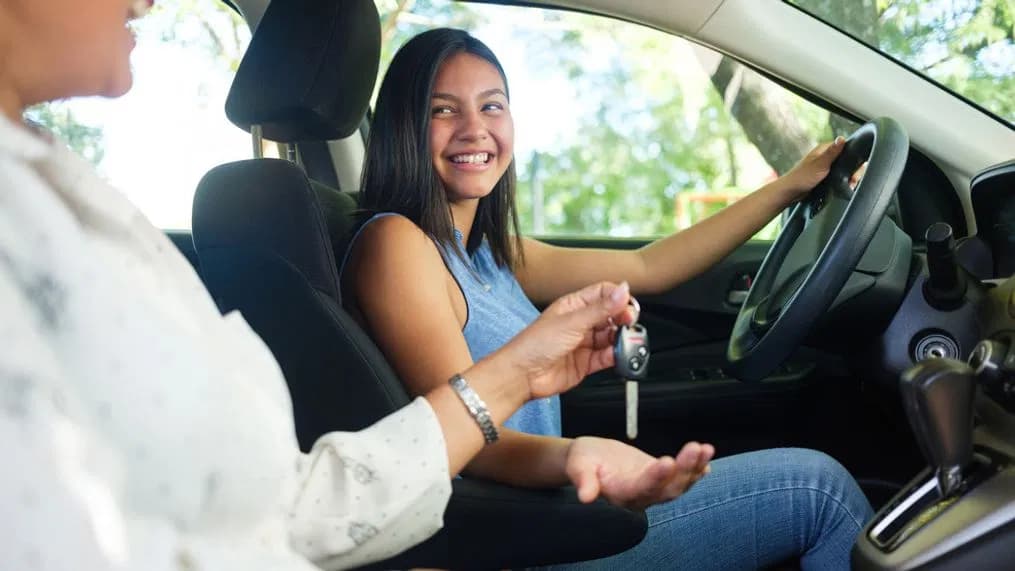Loading News Article...
We're loading the full news article for you. This includes the article content, images, author information, and related articles.
We're loading the full news article for you. This includes the article content, images, author information, and related articles.
This guide provides essential safety tips for parents, from setting clear rules and providing supervised practice to limiting distractions and teaching emergency preparedness skills. Learn how to navigate this challenging but exciting milestone with confidence.

Nairobi, Kenya – Watching your teenager get behind the wheel can be both exciting and nerve-wracking. But with a little preparation and a lot of guidance, you can help your teen become a confident, cautious, and responsible driver.
Before handing over the car keys, sit down with your teen and create a clear, written agreement. This helps set expectations and encourages accountability.
🚫 No texting or phone use while driving
🎯 Mandatory seatbelt use—for all passengers
🚦 Obeying speed limits and all traffic laws
🌙 Respecting a driving curfew (e.g., no driving after 9:00 PM)
✍️ Have both of you sign the contract. Treat it like a serious commitment.
Driving is a skill that improves with experience. Supervised practice in different conditions is essential.
✅ Practice in:
🌙 Nighttime driving
🛣️ Highways and bypasses
☔ Rainy or low-visibility conditions
🚦 Busy intersections and roundabouts
🚘 Real-world exposure builds confidence and reduces panic in tough situations.
📵 Step 3: Eliminate Distractions
Distractions are deadly—especially for new drivers.
🔕 Keep the phone out of sight and reach
👥 Limit passengers, especially other teens
🎶 Keep music low and non-distracting
📊 Studies show that the risk of crashes doubles with just one extra teen passenger.
Being prepared can make all the difference in a stressful situation.
🔧 Change a flat tire
🚧 Safely pull over in case of mechanical failure
📞 Call for help or report an accident
📝 Exchange details after a minor crash
🧠 Empower them with calm decision-making tools before they need them.
Not all cars are ideal for beginner drivers. Choose a vehicle that’s:
🛡️ Highly rated for safety (check crash ratings online)
⚙️ Mechanically reliable and regularly serviced
🚘 Not overly powerful—avoid high-horsepower cars
🧰 Equipped with basic features like:
ABS (Anti-lock Brakes)
ESC (Electronic Stability Control)
Airbags
💡 Tip: A well-maintained, used car with modern safety features can be safer than a flashy new one.
Your teen watches how you drive—make sure you’re setting the right example.
Always wear your seatbelt
Avoid calls and distractions
Stay calm, even in traffic
Follow the rules, every time
🚦 Your driving habits are the foundation for theirs.
|
Safety Step |
Why It Matters |
|---|---|
|
Driving Contract |
Sets clear rules and builds trust |
|
Supervised Practice |
Builds confidence and skill |
|
Distraction-Free Driving |
Prevents deadly mistakes |
|
Emergency Preparedness |
Equips your teen to act calmly under stress |
|
Safe Starter Car |
Lowers risk, builds good habits |
By combining boundaries, trust, and guidance, you can help your teen develop the habits that will keep them—and everyone else on the road—safe.
👨👩👧👦 A responsible teen driver starts with a responsible parent.
Keep the conversation in one place—threads here stay linked to the story and in the forums.
Other hot threads
E-sports and Gaming Community in Kenya
Active 6 months ago
Popular Recreational Activities Across Counties
Active 6 months ago
Investing in Youth Sports Development Programs
Active 6 months ago
The Role of Technology in Modern Agriculture (AgriTech)
Active 6 months ago